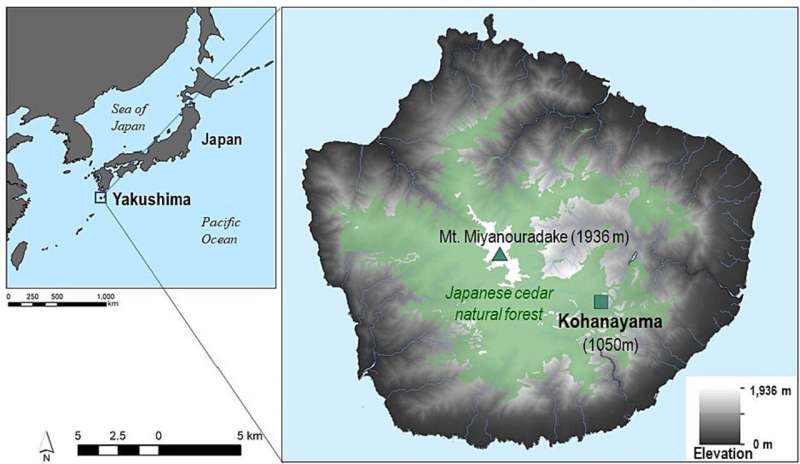This article has been reviewed according to Science X's editorial process and policies. Editors have highlighted the following attributes while ensuring the content's credibility:
fact-checked
peer-reviewed publication
trusted source
proofread
Canopy soil of old-growth forest fosters unique invertebrate diversity that is vulnerable to human disturbance

Yakushima Island, a world heritage site in Japan, is renowned for its rich biodiversity. The huge Japanese cedar (Yaku-sugi) forests, which are over a thousand years old, are a symbolic ecosystem of the island. Although the canopy of these colossal trees, including the Japanese cedar (Yaku-sugi), is considered to harbor a wealth of undiscovered biodiversity, conducting actual surveys presents significant challenges.
A research group embarked on an expedition up a Yaku-sugi tree and collected samples of "canopy soil," a long-term accumulation of decomposed leaves deposited at the junctions of branches and trunks. The study is published in Biological Conservation.
Using a genetic analysis technique known as DNA metabarcoding, the researchers discovered a broad range of invertebrates within this soil. The diversity was high, which is comparable with that of surface soil animals. However, the composition of families was markedly different, suggesting that the biota of the canopy soils were different from that of the surface.
Further investigation of younger cedar trees, approximately 300 years old, revealed a lesser amount of canopy soil deposition and a lower number of invertebrate families and orders detected.
The results reveal that the canopy soil of old trees contains rich and unique invertebrate diversity that has not recovered from logging, even after 300 years.
During the Edo period (1603–1868), Yaku-sugi trees were extensively logged, leaving primarily trees deemed of little timber value on Yakushima today. Nevertheless, the canopy soils that formed on the remaining Yaku-sugi trees have provided a valuable habitat for small organisms.
Globally, the number of old-growth forests with large trees is dwindling. This research represents a significant step toward re-evaluating the biodiversity value of such forests from a fresh perspective.
More information: Ikuyo Saeki et al, Legacy over a thousand years: Canopy soil of old-growth forest fosters rich and unique invertebrate diversity that is slow to recover from human disturbance, Biological Conservation (2024). DOI: 10.1016/j.biocon.2024.110520
Journal information: Biological Conservation
Provided by University of Tsukuba





















